
Animal
10:59, 12-Mar-2019
Make It Famous: Smallest but not least
Updated
12:51, 12-Mar-2019
By Zhu Yingming
00:18
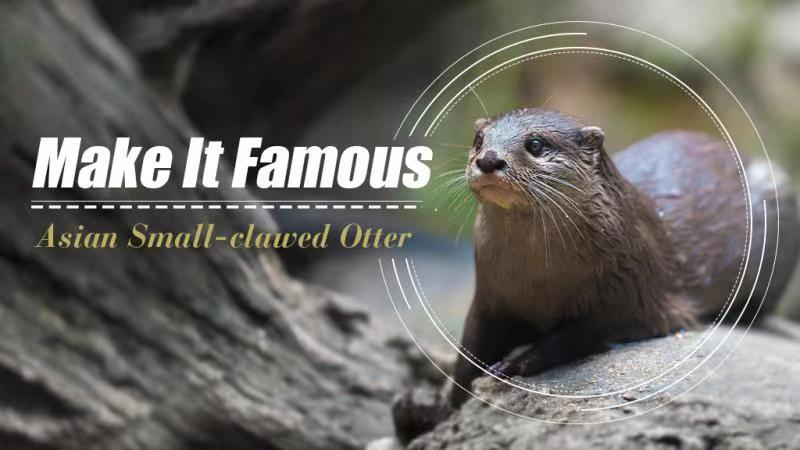
People click their videos on social media, adore them as pets, and hunt them for their fur.
Being the smallest of 13 otter species, and probably one of the cutest mammals in the world, the Asian small-clawed otter is yet to obtain long-overdue protection.
The smallest otter
The Asian small-clawed otter is the smallest of the 13 extant otter species. Its overall length is less than 100 centimeters, of which the tail accounts for 30 centimeters. The animal weighs only 1 to 5 kilograms. The giant otter, the largest otter species, can grow to 183 centimeters and weigh up to 34 kilograms.
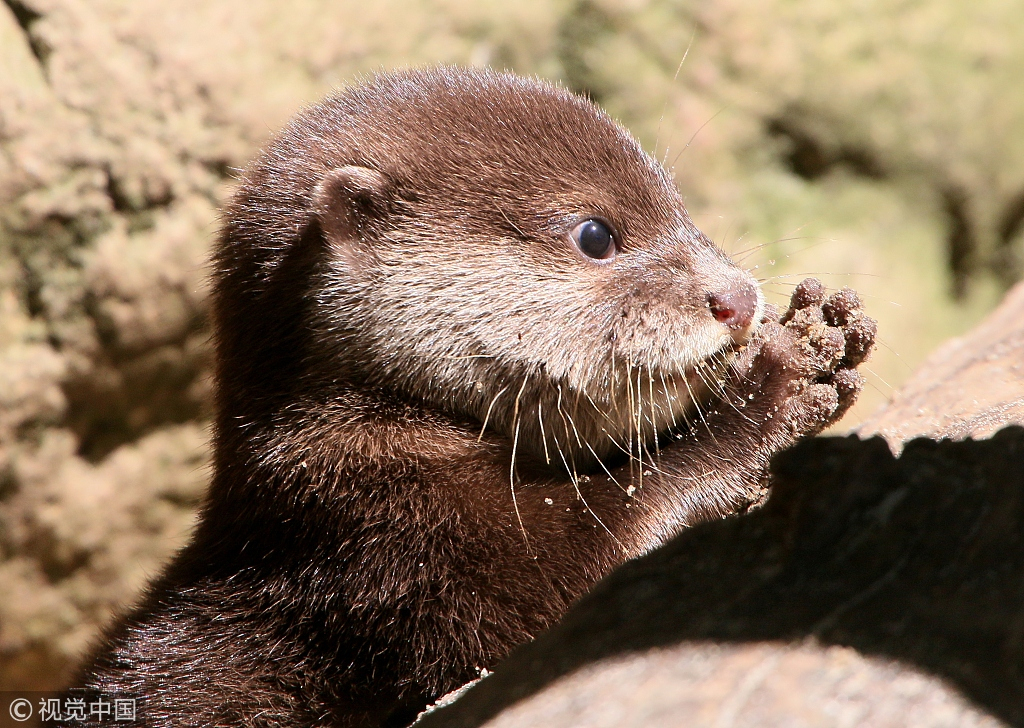
An Asian small-clawed otter pup. /VCG Photo
An Asian small-clawed otter pup. /VCG Photo
The small-clawed otter is native to south and southeast Asia, inhabiting freshwater wetlands in tropical and subtropical zones.
Although these otters are excellent swimmers, they spend most of their time on land, feeding mainly on invertebrates such as crustaceans and mollusks.
The otter catches prey with its partially webbed paws, which give it a superb sense of touch and coordination, and also distinguish it from all other otter species with full webbing, who catch prey with their mouth.
Instead of crushing shellfish to get to their juicy meat, the small-clawed otter leaves them drying in the sun for the heat to crack them open naturally.
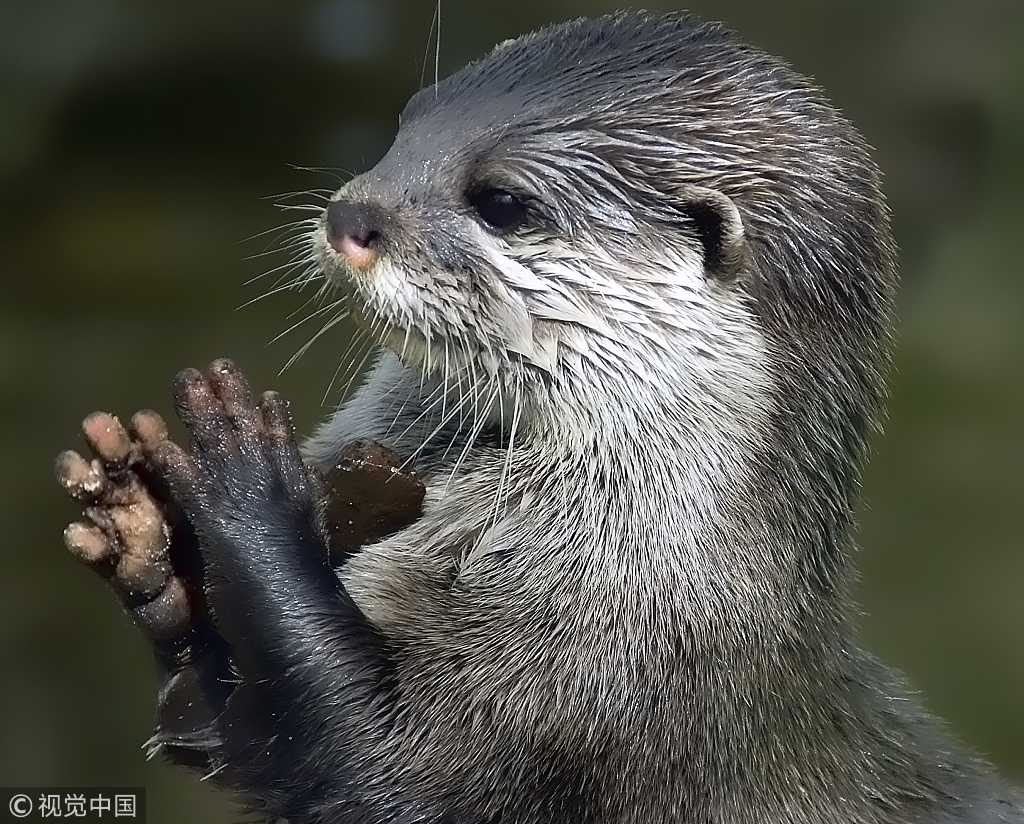
The Asian small-clawed otter. /VCG Photo
The Asian small-clawed otter. /VCG Photo
A monogamous and highly social animal, the small-clawed otter is very vocal, with a social vocabulary of at least twelve different vocalizations.
The first photographs of wild small-clawed otters were taken in 2016 in Yingjiang County of southwest China's Yunnan Province.
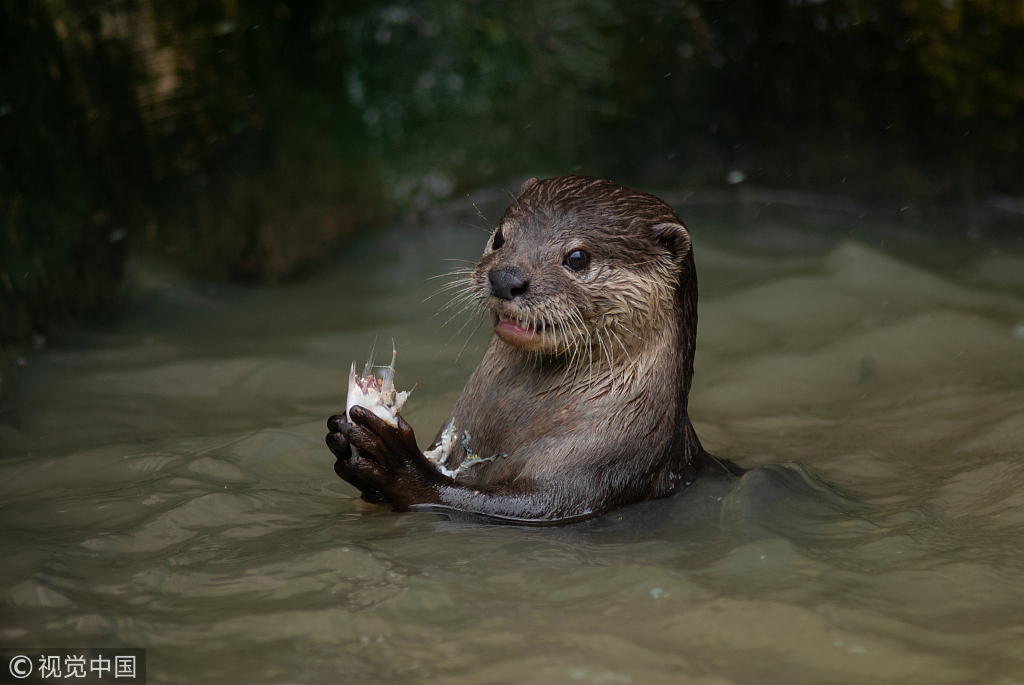
The Asian small-clawed otter holding its prey. /VCG Photo
The Asian small-clawed otter holding its prey. /VCG Photo
Otters in China
The Eurasian otter, the smooth-coated otter and the Asian small-clawed otter are the three otter species present in China. All three of them were listed as second-class protected animals in China in 1989.

The Eurasian otter (L), the smooth-coated otter (C) and the Asian small-clawed otter. /CGTN Graphic
The Eurasian otter (L), the smooth-coated otter (C) and the Asian small-clawed otter. /CGTN Graphic
However, the otter populations declined drastically in most regions of the country due to heavy hunting until recently.
According to a study by northeast China's Changbai Mountain National Nature Reserve in 2010, the local otter population dropped by 99 percent compared with the year 1975.
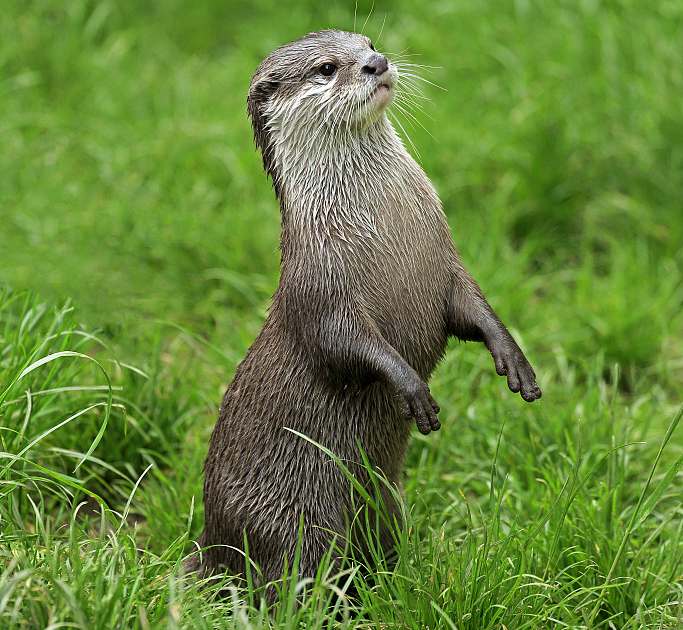
The Asian small-clawed otter. /VCG Photo
The Asian small-clawed otter. /VCG Photo
Otters were once widely distributed in China. Since 2000, only 57 sites were confirmed with otter occurrence.
With the Eurasian otter being the most recorded otter species in the country, merely three out of the 57 sites saw activities of the Asian small-clawed otter.
As the population continued to decrease, the IUCN Red List of Threatened Species listed the Asian small-clawed otter as vulnerable in 2014.
Not once in the past 30 years was the occurrence of the smooth-coated otter recorded anywhere in the country.
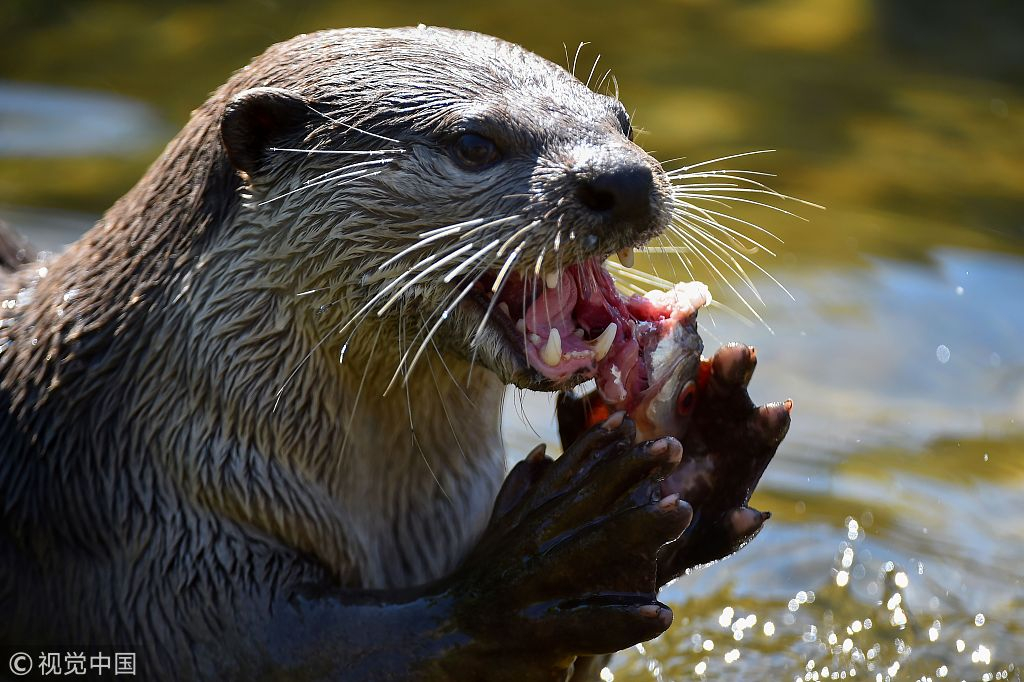
The smooth-coated otter. /VCG Photo
The smooth-coated otter. /VCG Photo
Protecting the otters
The small-clawed otter is a species protected by the Law of the People's Republic of China on the Protection of Wildlife (1989) – Class II and the CITES (the Convention on International Trade in Endangered Species of Wild Fauna and Flora) Appendix II against hunting, killing, capture and selling.
Given proper conservation, attention and protection, the otters still have a good chance of recovery.
In 2017, China's first otter monitoring team was established in Diaoluoshan National Nature Reserve in the country's southernmost Hainan Province, aiming to monitor and protect the Asian small-clawed otter.
Fresh feces of otters have been found in the nature reserve, signifying otter occurrence in the region where the river ecosystem improved.

Asian small-clawed otters. /VCG Photo
Asian small-clawed otters. /VCG Photo
Infrared cameras recently caught Eurasian otters in southwest China's Sichuan Province's Tangjiahe National Nature Reserve, which will co-host the 14th International Otter Congress in April 2019.
Hold in China for the first time, the quadrennial congress set "Ensuring the future of otters" as the theme, aiming to raise public awareness for the conservation of all otter species.
The International Otter Survival Fund (IOSF) designated the last Wednesday of May as World Otter Day, this year on May 29.

The Asian small-clawed otter. /VCG Photo
The Asian small-clawed otter. /VCG Photo
Make It Famous
During this year's Two Sessions, a CPPCC member proposed to update the List of Wild Animals under State Priority Conservation, which has been changed only once in 30 years. Although the country has made great achievements in protecting endangered species such as the giant panda, Tibetan antelope and crested ibis in the last decades, human activities, resource utilization and climate change are contributing to the destruction of the habitats of certain animals.
In this series, we will learn some of the unfamiliar endangered animals living in China and how people and organizations in China are dedicated to protecting them.
(Cover image designed by CGTN's Liu Shaozhen)
(If you want to contribute and have specific expertise, please contact us at nature@cgtn.com.)

SITEMAP
Copyright © 2018 CGTN. Beijing ICP prepared NO.16065310-3
Copyright © 2018 CGTN. Beijing ICP prepared NO.16065310-3